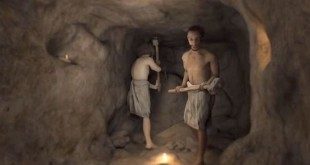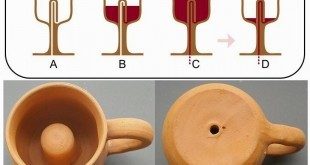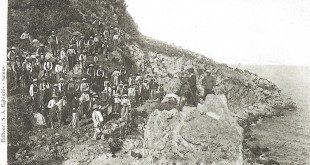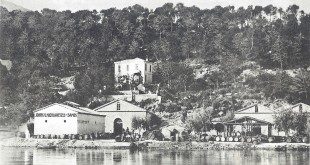The famous Samian architect and engineer Mandocles, the man who succeeded in joining the Straits of Bosporus via a bridge of ships thus enabling Darius` army to cross into Europe, brought glory to the people of Samos.
When Darius failed in Scythia or Perinthos, a colony of Samos in Propondis, he revolted against the Persians accompanied by Greek cities from Bosporus and Troada.This revolution constituted the forerunner/precursor of the Ionian revolution.
In 479 B.C., in the sea battle of Mikali, the people of Samos defeated the Persians with the help of the Greek fleet and the island of Samos became part of the Athenian Alliance. The island, due to its newly acquired prosperity, instigated the rivalry and hostility of Athens and with the abetment of Aspasia; the wife of the General Pericles, who was from Militos (a rival city of Samos), the Athenians destroyed the island. Since then, Samos never again succeeded in regaining its lost strength.
The fate of the island coincides with that of the Athenian State and the Athenians grant the people of Samos autonomy and rebuild the walls of the city which they had previously demolished. During the Peloponnesian Wars, around 430-404 B.C., the island is transformed into an Athenian center of naval operations. The control of the island then passes over to the Lacedemonians, subsequently to the Athenians, the Spartans, the Persians, until it is finally regained by the Athenians.
During the Hellenistic years of Alexander the Great, the island becomes semi-autonomous and is put under the supremacy of the Macedonians. Subsequently, Samos, along with the other Greek cities of Asia, constitutes part of the “Province of Asia” of the Roman Empire.
Towards the end of the Mythridatic war, the island is ravaged by pirates. With the onset of the epical conflict between Anthony and Octavos the island accommodates their navies and serves as a love nest for Anthony and Cleopatra around 40 B.C. During the era of Domitian and Valero Mesalinous, the island belonged to the “Province of the Islands”, the capitol of which was Rhodes.
During the entire period of Roman supremacy, the island experienced great destruction due to earthquakes and pirate attacks. Around the 5th century A.D. it is destroyed by the charging of the Germanic Races.
During the Byzantine Age when Greece was divided into prefectures, it becomes the 16th prefecture. In the middle of the 7th century it is ravaged by Syrian attacks and around 880 AD, is taken over by Tripolitis, the Emir of Crete. In 1024 the island repels the raid by the Russians in the Aegean and later in 1809 it is inhabited by Turks.
The decline of the island continues during the period of the Frank supremacy (1207-1479). The inhabitants of the island most of whom had abandoned Samos and sought refuge in Chios, were by that time very few. The period between 1475 and 1562 was a period of desolation. The Turks therefore invade the deserted island and colonize it 1550.
The re-establishment of social life is expressed through the formation of a system of “self-government” consisting of “village elders” and the four “Grand Elders” who executed the management of tax revenues and administered civil and criminal justice based on Roman-Byzantine and customary law.
The strong bond of the ecclesiastic parishes, monasteries and the Bishop constituted a unifying spiritual element which decided upon family and inheritance matters and preserved the written language since it was used to compose every sort of legal document.
The fresh ideas brought about the French Revolution of 1789, as well as the establishment of a nautical and merchant class, led to the emergence of the “Karmanioli” movement, which from the early 19th century was aimed at overthrowing the class of Elders, at the fairer distribution of taxes, at the establishment of annual general assemblies, at the accountability of rulers foe their actions, at the removal of the authoritarian Ottoman civil servants and at the liberalization of criminal justice.
The internal conflicts contribute to the maturing of politics among the people who are preparing for the National Revolution of 1821. The island thus, was organized and enforced the unique “civil-military system of Samos”.
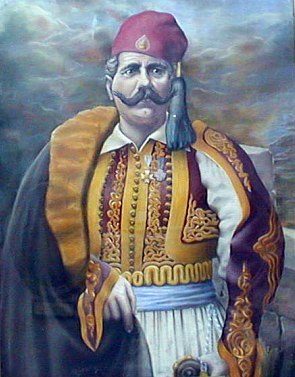
 iSamos.gr Η ενημερωτική σελίδα της Σάμου! Εξερευνήστε τη Σάμο, τις παραλίες της, τη φύση της, τις ομορφιές της. Διαβάστε την ιστορία της Σάμου
iSamos.gr Η ενημερωτική σελίδα της Σάμου! Εξερευνήστε τη Σάμο, τις παραλίες της, τη φύση της, τις ομορφιές της. Διαβάστε την ιστορία της Σάμου


